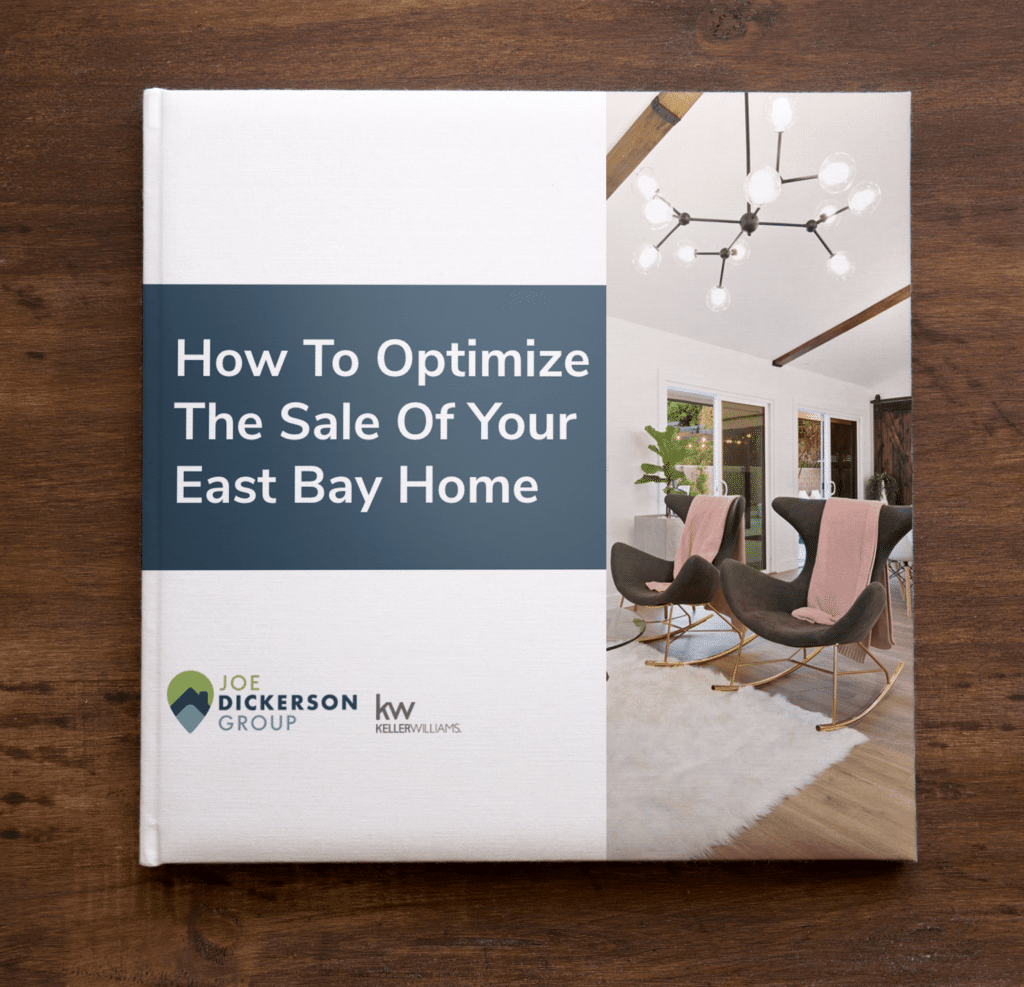If you own a real estate investment property, you’ve probably heard of a 1031 tax-deferred exchange. You may also have heard President Biden talking about getting rid of the 1031 exchange altogether and may be wondering whether now is the right time to sell your real estate investment property and defer your capital gains tax through a 1031 exchange.
The first time my wife and I did a 1031 exchange, we were able to successfully exchange a real estate investment property (a duplex) we owned in Washington, DC, and trade it in for 4 fourplexes in Huntsville, AL. Yes, you read that right – we exchanged a rental property with just 2 units for multiple properties totaling 16 units – all without paying capital gains tax.
In this article, we’ll share with you everything we know about 1031 exchanges, including what is 1031 exchange, how a 1031 exchange works, whether your property qualifies for a 1031 exchange, what the exchange process entails, the pros and cons of a 1031 exchange, and much more.
What Is A 1031 Exchange?
A 1031 exchange is a tax-deferred exchange involving an exchange of one business or real estate investment property for another “like-kind” property or multiple properties. In doing so, a 1031 exchange allows real estate investors to defer capital gains tax.
The term 1031 exchange comes from Internal Revenue Code Section 1031, which has many moving parts that you should understand before attempting a 1031 exchange. For example, Internal Revenue Code Section 1031 says that the exchange can only be done with like-kind properties, you must use a qualified intermediary, and you’ll need to adhere to strict timelines (more on all that in a bit).
If you navigate a 1031 exchange correctly, you can do as many 1031 exchanges as frequently as your little heart desires, deferring your capital gains tax along the way. However, if a tax-deferred exchange is done incorrectly, real estate investors will likely need to pay those capital gains tax, which is why it’s so important to understand the rules and the process.
1031 Exchange Example Property Scenario
At this point, you might be wondering what the net effect over time might be of a 1031 exchange and deferring your capital gains tax versus just selling your property and paying the capital gains tax now. Excellent question.
In a wildly appreciating market like the Bay Area, those capital gains tax can definitely add up, even for a single rental property, so 1031 exchanges can allow real estate investors to keep more proceeds and put them to work in another property.
Let’s say that you were to sell your rental property and had $300,000 in capital gains. You incur a tax liability of, let’s say, $45,000 when the property is sold, so only $255,000 remains to reinvest in another property.
If you were to use this $255,000 as a 25% down payment for another real estate investment property, you would be able to purchase a $1M property. Not bad.
Now let’s take a look at what the difference would be with a 1031 exchange. If you were to choose a 1031 exchange, you could reinvest the entire $300,000 into a replacement property. Assuming you were to put that in as a 25% down payment into a replacement property, you would be able to purchase a $1.2M replacement property – a difference of $200,000.
Over time, that difference could very well snowball and compound, leading to a huge difference in your overall cash flow potential and net worth.
1031 Exchange Lingo You Should Know
In the 1031 exchange world, there are a few terms that you’ll hear a lot, so let’s take a moment to talk about exactly what they mean so you can navigate the 1031 arena with more confidence (and let’s face it, sound cooler too).
Relinquished Property
The relinquished property is the real estate investment property that real estate investors will be selling in the 1031 exchange. Your relinquished property must be a business or investment property, not a personal property like a primary residence or vacation home.
Replacement Property
The replacement property is the real estate property or properties that real estate investors will be purchasing in exchange for the relinquished property. The replacement properties must be of equal or greater value than the relinquished property.
Qualified Intermediary
In order to successfully complete a 1031 exchange, you’ll need to engage a qualified intermediary – the person or company who will hold the proceeds from the sale (the exchange funds) and help facilitate the exchange.
The reason real estate investors need an exchange facilitator is that under section 1031, any proceeds received from the sale of a real estate property remain taxable.
For that reason, proceeds from the sale of your rental property must be transferred to your intermediary, rather than you as the seller of the property, and the qualified intermediary in turn transfers those exchange funds to the seller of the replacement property.
In this way, you never touch the proceeds from the sale of your real estate property, and thus those exchange funds from the property are not subject to tax liability.
It’s important to note that your intermediary can have no other formal relationship with you or the seller of the replacement property, outside of working as your 1031 exchange facilitator.
In other words, you’ll need a professional, not your mom or your neighbor. If you’d like a referral to a great qualified intermediary, let us know – we’d be happy to put you in touch.
Basic Rules Of 1031 Tax-Deferred Exchanges
In order to play the 1031 exchange “game,” you need to understand the rules in order to comply and thus “win” the benefit of being able to defer your capital gains tax. The first rule to understand is that you cannot exchange personal property.
Properties That Qualify For 1031 Exchanges
A 1031 exchange only applies to business or investment property. You cannot do a 1031 exchange on your personal property (e.g., your primary residence or vacation home). The property must be used primarily for business or investment purposes, not a personal property like your primary residence.
Like-Kind Property
When exchanging one real estate property for a replacement property, it must be a “like-kind” exchange. However, the IRS has a fairly loose definition of “like-kind” property, which is important to understand when maximizing your investing strategy.
Generally speaking, the IRS considers all real estate investment properties to be “like-kind.” What this means is that properties do not need to be exactly the same type of property.
For example, you can exchange raw land for an office building, a warehouse for a retail property, or a single-family rental home for a multifamily property. All of these are considered like-kind properties.
Exchanging A Property For One In A Different Location
Further, the replacement property you exchange for can be located anywhere in the US. So for example, you could sell a rental property here in the Bay Area and exchange it for a replacement property in Texas.
Exchanging Multiple Properties
You can even exchange a single property for multiple replacement properties or vice versa. Since Bay Area home values are so high, you could easily sell one real estate property here and exchange it into multiple properties, even across multiple states.
For those who want to get into the nitty-gritty of identifying multiple properties, here are the rules:
- You may identify up to three properties of any value with the intent of purchasing at least one.
- You may identify more than three properties with a total value that does not exceed 200% of the market value of the property you’re selling (the relinquished property).
- You may identify more than three properties with an aggregate value exceeding 200% of the relinquished property, knowing that 95% of the market value of all properties identified must be acquired.
The Timeline Rules For 1031 Exchanges
In addition to understanding whether your property qualifies for a 1031 exchange, it’s important to understand how the timeline of the exchange works as well, since this is a crucial part of ensuring a 1031 exchange is successful.
45-Day Rule
The first important deadline to mark on your calendar is the 45th day after you sell your property. As soon as you close on the sale of your property, the clock starts ticking for your 1031 exchange.
You have 45 days (approximately 6 weeks) to identify the like-kind replacement property or properties that you intend to purchase. Generally, you can designate up to 3 replacement properties, as long as you eventually close on one of them.
You’ll need to identify these properties in writing to your intermediary before midnight on the 45th day.
Forty-five days can pass in the blink of an eye, so it’s important to start thinking about the types of properties and markets you’d like to exchange for even before you sell your property. That way, you maximize your chances of identifying the replacement property within the 45-day window.
If you acquire the replacement property before selling your property, you might even be able to do a reverse exchange. Be sure to run this by your qualified intermediary to confirm the details.
180-Day Rule
The second timeline rule you need to be aware of is that you have 180 days after the sale of your property to complete the exchange. In other words, you have 180 days (approximately 6 months) to close on at least one replacement property you identified during the initial 45-day window.
It’s important to note that the two timelines run concurrently, so if you identify your property on the 45th day, you’ll have just 135 days after that to close on the new property.
The Pros And Cons Of 1031 Exchanges
Pro: Defer Capital Gains Tax
The biggest pro of doing a 1031 exchange, of course, is the tax benefit. In a wildly appreciating market like the Bay Area, this can make a substantial impact on your overall investing strategy.
If you have hundreds of thousands of dollars in capital gains and are able to roll that into a replacement property or multiple properties, that could help you exponentially increase not only your cash flow but also your growth and equity over time.
Con: 45-day Timeline
The 45-day timeline to identify the replacement property can be stressful, especially if you attempt a 1031 exchange around the winter holidays like we did. #amateurmove
That being said, the 45-day timeline is definitely doable, with some proactive planning and strategy. Our team has helped our clients successfully navigated many 1031 exchanges, and we can help you strategize on how best to maximize success within the 45-day window.
Con: Pressure To Find A Replacement Property
Another thing you should be aware of when going into a 1031 exchange is the pressure to find a replacement property within 45 days and to close on it within 180 days. Sometimes this may challenge you to think outside the box and get creative to find the right property.
This is why we recommend going into the 1031 exchange with a solid strategy in place. Know what type of property you want to exchange for, in what market, and at what price point. This will maximize your chances of finding the right replacement property.
Con: Potential Tax Implications
If you have a failed exchange, you’ll be paying capital gains tax on your property. Make sure you’re prepared to move quickly and make sure you’re ready to find and buy a replacement property as soon as possible, to maximize your chances of success.
Another thing to consider is the cycle of 1031 exchange transactions. Let’s say, for example, you decide to sell a real estate investment property you purchased a few years ago.
You have significant capital gains on the property, so you sell it and do an exchange. Then, in two years, you do it again. Then, you do it three or four more times.
After 10 or 15 years, you have deferred gains on hundreds of thousands, or even millions, of sale proceeds. When you’re finally ready to unwind that final property and access the cash, your tax liability will be pretty huge. You have all of that capital gain over all those exchanges.
Pro: Ability For Your Heirs To Inherit Your Properties Without Paying Your Deferred Taxes
However, there is one significant opportunity with this wealth creation. That is, if you die before putting an end to your run of 1031 exchanges, your heirs receive your real estate investments on a stepped-up basis, which means that they get the assets at their fair market value at the time of your death.
Let’s say you began with a $500,000 property and, after a series of 1031 exchanges, finished with a portfolio worth $5 million over the span of your lifetime. Instead of paying capital gains taxes on the $4.5 million, your heirs won’t have to pay capital gains taxes at all.
They may have to pay estate taxes (consult a CPA for full details), but it will be far less than all those deferred capital gains taxes they would have paid otherwise.
The Process Of Completing A 1031 Exchange
As you can see, there are a lot of steps and guidelines to completing a successful 1031 exchange. It’s important to go into the 1031 exchange with a clear understanding of everything that’s involved so that you can comply with all the guidelines and successfully defer your capital gains taxes for your property.
Below is an overview of the steps of a 1031 exchange.
Step 1 – Identify the property you want to sell
The first step is to take a look at your existing portfolio and decide which property you want to sell. Perhaps it’s a property that’s underperforming or one that has seen a lot of appreciation in the time you’ve held it, and thus you have a lot of equity locked in the asset.
Get a home valuation to determine how much your home could sell for now, versus how much you originally paid for it, to get an idea of your equity and capital gains. Then, work to prepare your property for sale.
On top of choosing which property you want to sell, also take into consideration the ideal conditions you’d like to meet in order to sell. For example, you might want to wait until one of your tenants moves out, or you may want to wait until a certain time of year.
Step 2 – Choose a qualified intermediary
As soon as you decide that you want to do a 1031 exchange, you should get in touch with an intermediary. A good intermediary is a 1031 expert and can guide you through all the ins and outs of the process.
Often, intermediaries also have connections to realtors and investors in multiple markets who might be interested in exchanging with you or have opportunities you might be interested in.
Having a good intermediary on your team is a crucial part of the 1031 exchange process.
Step 3 – Identify the property or properties you want to buy
As mentioned above, once your property is sold, you’ll have 45 days from the time you close on your relinquished property (the one you’re selling) to identify in writing your replacement property. The replacement property must be of equal or greater value than the relinquished property.
If you have a replacement property or multiple properties under contract within that 45-day window, that’s ideal, as you maximize the chances that you’ll be able to follow through with the purchase of that property.
However, don’t wait until your relinquished property closes to start looking for your replacement property. You should start thinking about and looking for your replacement property as soon as possible, even before you put your property on the market.
Even if you acquire a replacement property before you sell your relinquished property, you can ask your qualified intermediary about doing a reverse exchange.
Step 4 – Decide how much of your sale proceeds will go toward the replacement property
A 1031 exchange isn’t all or nothing. Depending on your goals and investing strategy, you can reinvest just a portion of the proceeds from the sale of your relinquished property.
You can defer capital gains tax only on the portion you reinvest, but if you need some of the proceeds now for, say, a kitchen renovation, it might be worth paying the capital gains just on that portion and reinvesting the rest into a replacement property.
Be sure to speak with your qualified intermediary to understand your options and timing.
Step 5 – Watch the calendar
Once you close on your relinquished property (the one you’re selling), the clock starts ticking. You have 45 days to identify your replacement property. Remember – you have to submit this in writing to your qualified intermediary by midnight on the 45th day.
Then, you’ll need to close on at least one property in your list within 180 days. Any portion of your sale proceeds that are not successfully reinvested into another property will be liable to capital gains taxes.
If you fail to identify replacement properties within 45 days or the close on the properties within 180 days, you can still go through with the purchase of the new property, but you will be liable for the full capital gains taxes on your relinquished property.
Step 6 – Tell the IRS about your 1031 exchange
Once you complete your 1031 exchange, start by celebrating! Successfully completing a 1031 exchange is not easy, but it will make a significant impact on your wealth strategy over time.
Be sure to tell the Internal Revenue Service about your 1031 exchange as well, so they can celebrate with you.😄
You’ll likely need to file IRS Form 8824 with your tax return. In it, you’ll describe the relinquished and replacement property, the timeline, the parties involved, and the proceeds and amount reinvested.
Be sure to speak with your CPA about the exact details for your situation.
Are You Thinking About Doing A 1031 Exchange?
If you’re considering a 1031 exchange for your property either here in Oakland, the East Bay, or elsewhere, our team is here to help. We know how big an impact a successful 1031 tax-deferred exchange can have on your overall investing strategy and wealth creation.
We are intimately familiar with the ins and outs of how 1031 exchanges work. We can also connect you with an experienced qualified intermediary and strategize with you on your property and how best to maximize your 1031 exchange success to meet your overall life and wealth goals.
To get started, call or text us at 510.995.0035, or click here.



